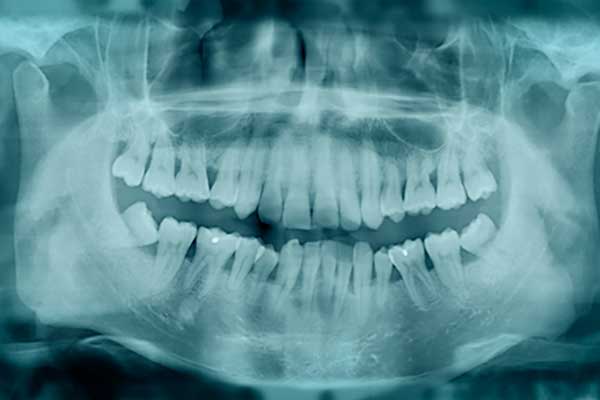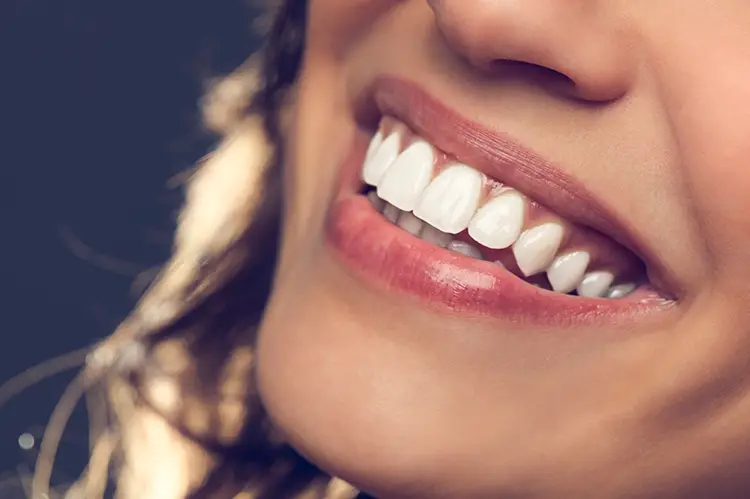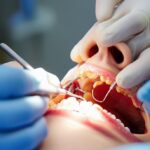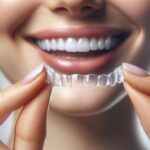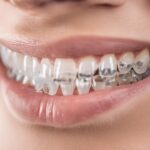Risks of Counterfeit Invisalign
Counterfeit Invisalign products pose significant health risks to users. These unauthorized products, often found through questionable online markets or underground dealers, lack the quality, research, and safe materials inherent in FDA-approved Invisalign.
These imitations can lead to allergic reactions due to substandard materials. Users have experienced:
- Swollen lips
- Itchy gums
- Severe reactions requiring medical attention
Materials not approved by health regulations can introduce toxins into the mouth, causing these reactions.
The poor fit of counterfeit Invisalign can also cause dental issues. Unlike authentic aligners designed for each individual’s dental structure, counterfeit versions often have inadequate sizing. This can result in:
- Constant pressure on the wrong parts of the gums and teeth
- Gum recession
- Increased tooth mobility
- Higher risk of tooth decay due to food particles and bacteria accumulation
Instead of achieving well-aligned teeth, patients using counterfeit products may end up with misaligned bites that require costly and time-consuming corrective surgeries or additional orthodontic interventions.
There have also been reports of patients experiencing inhalation or digestion hazards due to fragments of poor-quality aligners snapping.
These risks highlight the importance of prioritizing credible, professionally guided orthodontic care. Consulting with certified orthodontic specialists and purchasing genuine products through verified suppliers or dental professionals is crucial for ensuring safe and effective treatment.
Identifying Counterfeit Invisalign
To avoid the risks associated with counterfeit Invisalign aligners, it’s important to know how to identify them. One key aspect to consider is the product packaging. Genuine Invisalign products come in sealed, professionally labeled packages with a verifiable serial number. Counterfeit versions may have sloppy packaging, typos, or poor-quality print.
The material quality of the aligners is another significant factor. Authentic Invisalign aligners are made from medical-grade thermoplastic polymer, which is biocompatible, durable, and smooth. Counterfeit aligners may appear rigid, brittle, or have an unusual plastic odor, indicating inferior materials not approved for medical use.
Verification through professional consultations is essential. Certified orthodontic specialists or dentists have a direct supply line from Invisalign, ensuring all materials meet the required standards and are customized to individual dental records and needs. These professionals provide initial examinations and follow-up appointments to ensure proper fit and function.
When purchasing Invisalign, approach distributor or practitioner websites directly. They often provide warranty information or offer patient support. Be cautious of third-party online vendors selling Invisalign at significantly lower prices or without requesting a dental prescription, as these are potential red flags for counterfeit products.
Remember, investing in authentic orthodontic products is an investment in your dental health and aesthetics. Consulting with a healthcare professional is the most reliable way to ensure safety and authenticity in your treatment plan.

Legal and Regulatory Framework
Adhering to legal and regulatory standards is crucial for ensuring the safety and efficacy of orthodontic treatments. In the United States, the Food and Drug Administration (FDA) heavily regulates the sale and distribution of medical devices, including Invisalign, to protect consumers from serious risks associated with counterfeit products.1
The FDA requires all medical devices to undergo rigorous testing and approval before being released to the market. Invisalign products must receive FDA approval and are subject to ongoing oversight to ensure they meet stringent safety standards.
Violating these regulations can result in severe legal penalties, including:
- Substantial fines
- Confiscation of illegal products
- Criminal charges leading to imprisonment
These consequences serve as a deterrent to would-be offenders and protect consumers from potentially harmful products.
Both vendors and consumers must understand the gravity of these legal consequences. Ensuring compliance with FDA guidelines helps maintain a trustworthy marketplace where consumer well-being is a top priority. Compliance also protects businesses from statutory penalties and upholds their reputation as credible and ethical providers within the orthodontic community.
Consumers are encouraged to report any suspected counterfeit activity to the FDA, playing an active role in safeguarding community health and enabling authorities to act swiftly against fraudulent activities. Engaging and cooperating with these regulations facilitates a safer medical device market, expanding the reach of authentic and beneficial orthodontic treatments like Invisalign.
Recognizing the significance of these regulatory measures fosters an environment where safety prevails, outcomes are optimized, and orthodontic innovations continue to improve smiles without the health risks imposed by counterfeit alternatives.

Historical Issues and Company Response
Despite Invisalign’s success, the company has faced historical incidents that required safety reassessments and prompt attention to consumer concerns. One notable event involved user reports of adverse reactions, as highlighted in FDA reports and public complaints, ranging from allergic responses to issues of discomfort and misalignment.2
In response, Align Technology, the makers of Invisalign, took several steps to address these challenges:
- They revised the material compositions used in manufacturing the aligners to ensure they were non-toxic and biocompatible, mitigating the risk of allergic reactions.
- Align Technology enhanced its communication strategy, prioritizing open dialogue with consumers and healthcare professionals about product safety and proper usage guidelines.
- The company implemented rigorous quality control measures, including the introduction of precise digital imaging and fabrication technologies to ensure custom-made aligners fit individual users perfectly, reducing health risks associated with poor alignment or improper fitting.
- To emphasize the necessity of professional oversight, Align Technology advocated for the distribution of Invisalign exclusively through certified dental professionals.
These responses by Align Technology served as crucial pivot points that substantially reconstructed consumer trust. By tackling issues head-on and keeping stakeholders informed, Align succeeded in reframing its narrative to one denoting safety, innovation, and reliability. As users grew more confident in the safety and efficacy of Invisalign, the company experienced a resurgence in market share and public image.
Today, Align Technology remains committed to safety innovations and consumer education about authentic product use, ensuring its position as a leader in orthodontic solutions. The journey of Invisalign serves as a powerful case study on how proactive company responses help mitigate risks and fortify trust among consumers, shaping a path towards sustained business success and consumer health safeguarding.
In conclusion, while counterfeit Invisalign products may seem like a financially appealing option, they carry significant risks that can compromise both dental and overall health. Opting for authentic Invisalign treatments through certified professionals is crucial for safe and effective orthodontic care.
- US Food and Drug Administration. Overview of Device Regulation. Accessed April 29, 2023.
- Align Technology Inc. Invisalign Safety Information. Accessed April 29, 2023.



